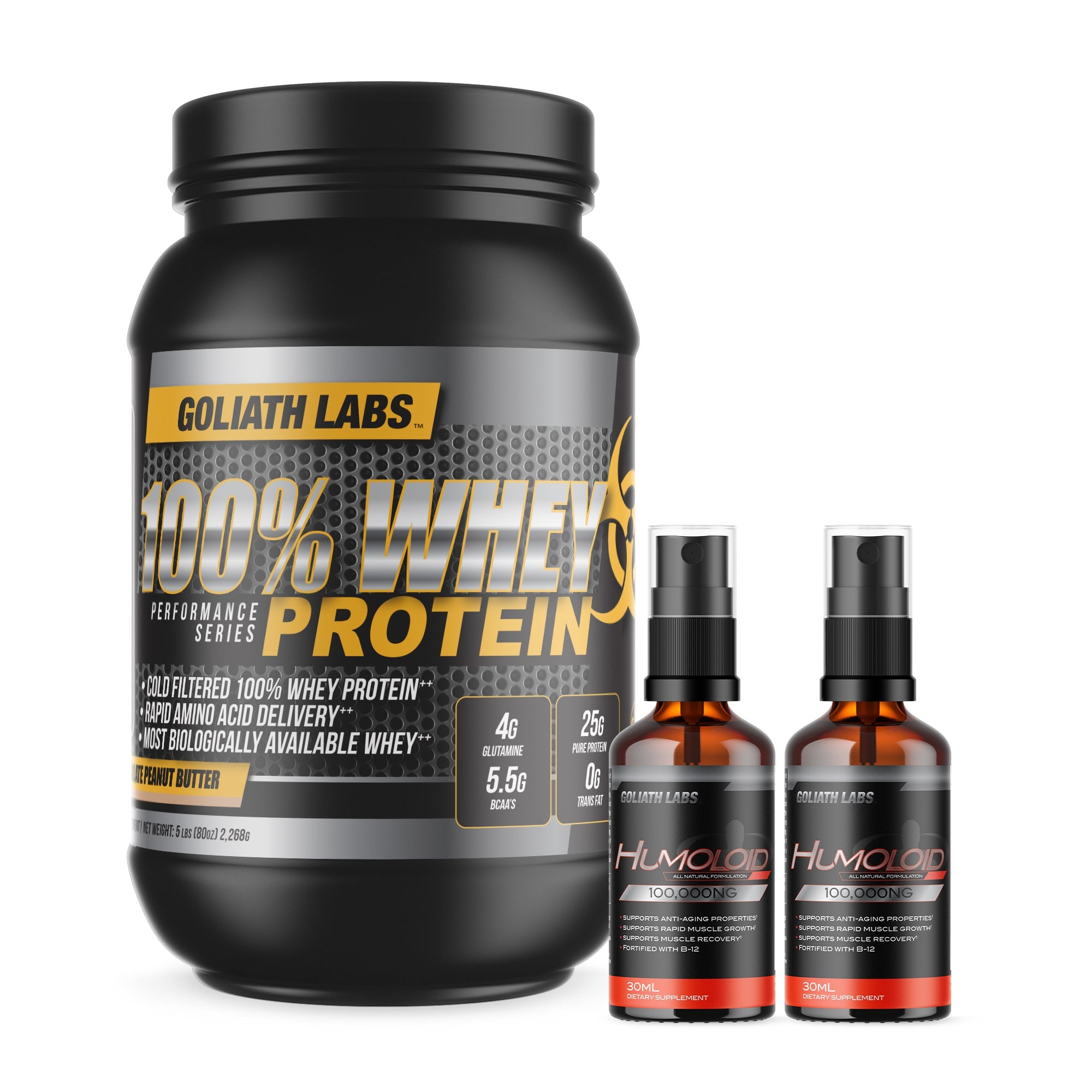Creatine and creatinine are separated by just a few letters, but confusing the two can lead to real misunderstandings about your health.
As creatine monohydrate continues to gain traction among lifters, runners, and recovery-focused athletes, more users are running into blood test results showing elevated creatinine, and wondering if their supplement is to blame.
Since creatinine is a standard marker used to evaluate kidney function, the concern is valid. But most articles gloss over the nuanced biology behind this relationship.
Image Source -> ScienceDirect
In this guide, we’ll break down exactly what creatine does, what creatinine is, how they interact, and what current science says about the risks.
If you're supplementing and paying attention to your health, this is the clarity you’ve been looking for.
What Is Creatine Monohydrate?
Creatine monohydrate is one of the most effective, research-backed supplements in modern sports nutrition.
It’s not a stimulant, not a hormone, and not reserved for bodybuilders. It’s a naturally occurring compound that plays a direct role in how your muscles, and your brain, generate energy during high-demand activity.
How It Works in the Body
Creatine supports the rapid regeneration of ATP (adenosine triphosphate), which fuels short bursts of high-intensity effort.
When ATP depletes, usually within seconds during lifting or sprinting, creatine recycles it by donating a phosphate group. This lets you push harder, for longer, with faster recovery between efforts.
It also promotes intracellular hydration by drawing water into muscle cells, improving nutrient delivery, performance output, and recovery without overstimulation.
Key Benefits of Creatine Monohydrate
-
Enhanced strength and power
-
Increased muscle cell volume (“fullness”)
-
Improved post-workout recovery and training frequency
-
Proven safety across decades of use in healthy individuals
Creatine monohydrate is highly bioavailable, stable, and consistently effective, making it the preferred form in both clinical studies and practical use.
Who Is It Suitable For
Creatine’s benefits aren’t limited to athletes.
Research in aging adults shows potential support for cognitive performance, brain energy metabolism, and neuroprotection, especially under stress or sleep deprivation. Its value extends well beyond the gym.
What Is Creatinine and What’s Its Biological Role?
Creatinine is a waste compound produced during the normal breakdown of creatine in skeletal muscle.
Every day, your body converts a small percentage of its stored creatine into creatinine as part of energy metabolism.
This process is continuous, predictable, and unrelated to injury or dysfunction.
Once formed, creatinine enters the bloodstream and is filtered out by the kidneys into the urine, making it a convenient marker for assessing renal function.
Creatinine as a Metabolic Byproduct
Because creatinine production is relatively stable and correlates with muscle mass, it provides a baseline that doctors use to evaluate kidney performance.
More muscle typically equals more creatinine, even in perfectly healthy individuals. Creatine supplementation can also modestly increase this baseline, not because it's damaging your kidneys, but because there's simply more creatine in circulation being metabolized.
That nuance matters. An elevated creatinine level isn’t a diagnosis, it’s a data point that needs context.
Medical Marker of Kidney Function
Clinicians often use serum creatinine to estimate glomerular filtration rate (eGFR), which reflects how efficiently your kidneys are clearing waste. If eGFR drops or creatinine rises beyond expected ranges, it may suggest impaired filtration.
But interpretation isn’t always straightforward.
Physically active individuals, those on high-protein diets, and anyone supplementing with creatine may show higher creatinine levels without any kidney dysfunction.
Misreading this data can lead to unnecessary concern, or worse, discontinuation of a safe and beneficial supplement.
Common Concern: “Won’t Creatine Raise My Creatinine and Harm My Kidneys?”
Yes, creatine can raise your creatinine, but not all elevations are harmful.
In healthy users, it's a harmless byproduct of increased muscular turnover. The key is context, not panic.
We'll cover how to interpret this properly next.
The Relationship Between Creatine and Creatinine
Creatine and creatinine are biologically linked, but functionally distinct.
Creatinine is the final metabolic byproduct of creatine breakdown, and this conversion happens naturally, predictably, and continuously.
When you supplement with creatine, especially in athletic or high-performance contexts, you increase the substrate, which leads to a proportional increase in creatinine production.
This is expected and harmless in healthy individuals.
Natural Conversion Process
Each day, roughly 1–2% of your body’s creatine pool is broken down into creatinine.
Image Source -> Wiley Online Library
This byproduct enters the bloodstream, is filtered by the kidneys, and exits through urine. Elevated creatinine on a blood test doesn’t automatically signal disease, it can simply reflect greater muscle mass, high protein intake, or creatine supplementation.
Unfortunately, that distinction often gets overlooked.
Lab Testing Caveats
Standard lab panels interpret serum creatinine values against population averages, not individual baselines. These tests can’t tell the difference between elevated creatinine from natural causes (like creatine use or high-intensity training) versus pathological causes (like impaired kidney filtration).
That means an athlete with high muscle mass who supplements with creatine could trigger a red flag despite having completely healthy renal function.
If your healthcare provider isn’t aware that you’re using creatine, they may misinterpret your lab results, leading to inaccurate conclusions about your kidney health.
Alternative diagnostics like cystatin C or creatinine clearance tests provide a more accurate picture in these cases.
Is Creatine Monohydrate Safe for Your Kidneys?
Creatine monohydrate is among the most clinically validated supplements on the market, and its safety profile has been thoroughly established in healthy adults.
Across dozens of peer-reviewed studies, even high-dose protocols (such as a 20-gram daily loading phase) have shown no evidence of kidney damage when hydration is maintained.
In fact, creatine has been safely used in populations ranging from elite athletes to older adults and patients undergoing clinical trials for neurological conditions.
Evidence From Research
Multiple long-term studies have consistently concluded that creatine supplementation does not impair renal function in people with normal baseline kidney health.
Creatinine levels may rise slightly, but other markers of kidney performance such as blood urea nitrogen (BUN), estimated glomerular filtration rate (eGFR), and cystatin C remain unaffected. This reinforces the idea that elevated creatinine alone doesn’t equate to actual dysfunction.
Clinical Nuance
For individuals with preexisting kidney disease, the equation changes. While creatine may still be tolerated in some cases, it's essential to consult a physician and monitor labs with appropriate context.
This includes requesting more specific diagnostics, such as cystatin C, which isn’t influenced by muscle mass or supplementation, or a 24-hour creatinine clearance test for individualized baseline tracking.
Key Factors That Keep Creatine Safe
-
Hydration: Creatine increases intracellular water retention. Dehydration can add strain to the kidneys and skew lab readings.
-
Form Matters: Avoid creatine ethyl ester, which degrades rapidly into creatinine in the gut and offers no added benefit.
-
Consistency: Fluctuating use or intermittent high doses create more variability in blood levels and complicate lab interpretation.
Misinterpreted Lab Results
“Can creatine make me fail a life insurance test or look like I have kidney disease?”
Yes, if the examiner relies solely on serum creatinine without considering your training or supplement history.
Always disclose creatine use and, if possible, request renal markers less influenced by muscle metabolism. A false positive on paper doesn’t reflect your real-world health when context is missing.
Why Creatine Monohydrate Outperforms Other Forms
Among the many variations of creatine marketed today, liquid creatine, creatine HCl, buffered creatine, creatine monohydrate remains the gold standard for one simple reason.
It works.
It has the highest bioavailability, the lowest degradation rate, and the most scientific validation across multiple populations and use cases.
No other form offers comparable consistency in raising intramuscular creatine stores.
Why Micronized Creatine Monohydrate Is Recommended
Creatine monohydrate is over 99% pure in most formulations and demonstrates excellent absorption when taken with fluid, especially in micronized forms.
Micronization reduces particle size, which increases solubility and minimizes the bloating or grittiness some users experience with older powder formats. This improves both the user experience and cellular uptake, making each dose more efficient.
In terms of stability, monohydrate resists premature breakdown in liquid and stomach acid far better than most “designer” versions.
That means more creatine reaches your muscles, and less is lost as waste. This also results in a more predictable creatinine response on lab work, less spike, more control.
Why to Avoid Creatine Ethyl Ester
Despite bold marketing claims, creatine ethyl ester (CEE) degrades rapidly in the gut before reaching muscle tissue. Most of it converts to creatinine within hours, offering no additional ergogenic benefit and significantly increasing the likelihood of elevated serum creatinine on blood tests.
In short: CEE costs more, works less, and complicates your labs. Monohydrate wins on performance, purity, price, and peace of mind.
How to Use Creatine Without Worrying About Creatinine
Creatine monohydrate is safe for the vast majority of users, but to avoid confusion over creatinine levels or kidney health, it helps to follow a few best practices.
Proper usage not only enhances performance outcomes, but also minimizes unnecessary red flags on lab reports. Whether you’re new to supplementation or looking to optimize your regimen, the following guidelines keep both your training and your health metrics in check.
Best Practices for Creatine Supplementation
To quickly saturate muscle stores, an optional loading phase of 20 grams per day (divided into 4 doses) for 5 to 7 days is commonly used. After this, a maintenance dose of 3 to 5 grams per day sustains elevated levels.
Timing matters. Taking creatine post-workout alongside carbohydrates improves uptake by leveraging insulin-driven nutrient transport.
While pre-workout dosing is also effective, post-exercise absorption tends to be more efficient, especially when combined with a recovery meal or shake.
Stay Hydrated
Creatine increases intracellular water content, which contributes to muscle volume and performance. But this also increases the body’s demand for water.
Inadequate hydration can strain the kidneys and may exaggerate creatinine readings, even in otherwise healthy individuals.
A good rule of thumb: drink at least half your body weight in ounces of water per day, more if you train hard or live in a hot climate. Hydration supports both muscle function and kidney filtration.
Test Smarter
If you’re being tested for kidney health, especially for insurance, routine checkups, or clinical monitoring, inform your provider that you use creatine.
Request cystatin C or a 24-hour creatinine clearance test, both of which offer more accurate assessments unaffected by muscle mass or supplementation.
Who Should Be Cautious?
Creatine may not be appropriate for individuals with diagnosed kidney disease or those taking nephrotoxic medications (e.g., for arthritis, hypertension, or diabetes).
For everyone else, especially active adults with no underlying renal issues, there is no evidence-based reason for concern. Elevated creatinine in this context is often a sign of better muscle health, not kidney distress.
Creatine Isn’t the Enemy, But Know What You’re Taking
Creatine monohydrate has earned its reputation as one of the most reliable tools for enhancing strength, performance, and recovery.
Yes, it can slightly raise creatinine levels, but this increase is both expected and benign in healthy individuals. The key is understanding the biology, interpreting lab results in context, and using the supplement with consistency and proper hydration.
Outdated myths about kidney damage continue to circulate, but the science tells a different story. For most people, creatine is not only safe, it’s one of the most well-supported performance enhancers available.
If you’re looking for a high-quality, lab-tested creatine monohydrate and other supplements, you can find them at the Goliath Lab online store.



